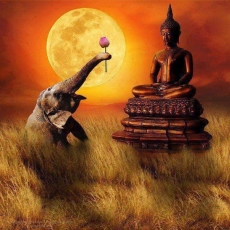Yogācāra
Yogācāra (literally "yoga practice"; "one whose practice is yoga") is an influential tradition of Buddhist philosophy and psychology.
The 4th-century Gandhāran brothers, Asaṅga and Vasubandhu, are considered the classic philosophers and systematisers of this school, along with its other founder, Maitreya.
Yogācāra philosophy is primarily meant to aid in the practice of yoga and meditation and thus it also sets forth a systematic analysis of the Mahāyāna path of mental training.
Yogācāra works, like the Saṅdhi-nirmocana Sūtra, developed various core concepts such as vijñapti-mātra, the ālaya-vijñāna (store consciousness), the turning of the basis, the 3 natures (tri-svabhāva), and Emptiness.









